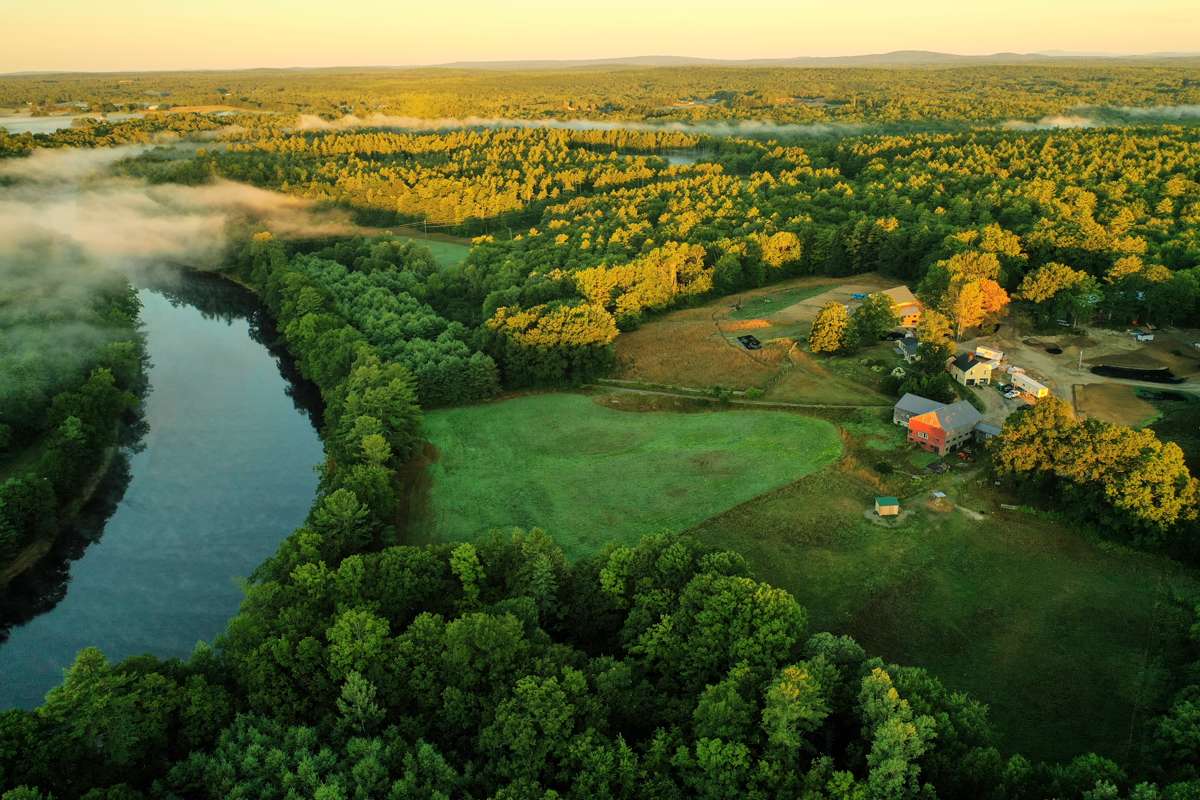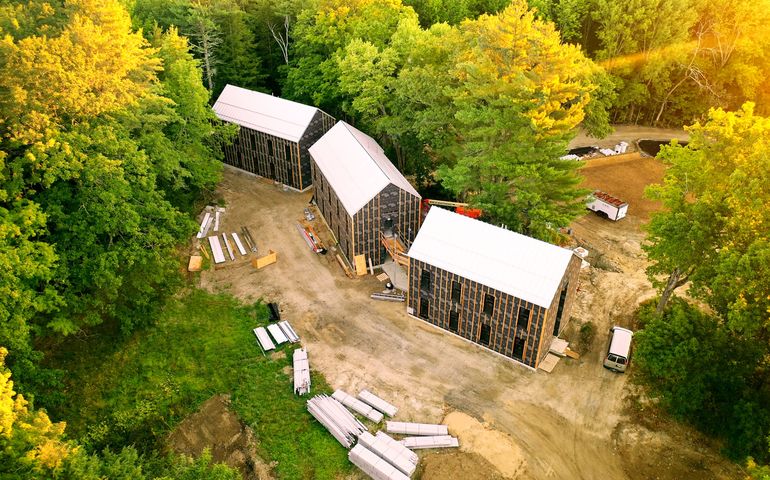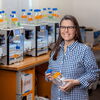
Ecology School's sustainable campus, 6 years in the making, to open
 Courtesy / The Ecology School
The school’s new dormitory, seen here under construction last fall, is part of a project that aims to meet the world’s most rigorous sustainability standards.
Courtesy / The Ecology School
The school’s new dormitory, seen here under construction last fall, is part of a project that aims to meet the world’s most rigorous sustainability standards.
An environmental school in Saco will unveil its new environmentally sustainable campus, a $14.1 million project that took six years of visioning, planning and construction.
The Ecology School plans to commemorate the completion of its “regenerative” green campus at River Bend Farm during a weeklong celebration, from April 19-24. Events will include flipping the switch on 712 solar panels, a virtual message from Gov. Janet Mills and COVID safe tours of the new facility.
The events are timed to coincide with Earth Day. Click here to view the schedule of events.
The campus stretches over a 105-acre farm with views of the Saco River. It is expected to be the first location in Maine, and among 23 in the United States, to achieve the International Living Future Institute’s Living Building Certification, regarded as the most comprehensive green building certification in the world.
Buildings that achieve the certification are designed to connect occupants to natural light, open air, food, nature and community. They are self-sufficient and remain within the resource limits of their site; and create a positive impact on the human and natural systems that interact with them. They also achieve excellence in key performance areas including energy, health and happiness, materials, equity, beauty, place and water.
Design, construction and renewable energy contractors included Kaplan Thompson Architects, Briburn, Simons Architects, Richardson & Associates, ReVision Energy, Zachau Construction and Hancock Lumber.
“This is the type of project that will continue to propel sustainable building forward in our state and help others see the possibilities,” Jeff Zachau, president of Zachau Construction.
The project included a 9,000 square-foot dormitory, the 7,000 square-foot Poland Spring Education and Dining Commons and a solar array expected to generate 105% net positive energy.

“It is my greatest hope that children, adults, school leaders, business leaders, government leaders — everyone — will visit this campus and realize that living green is not only beautiful and elegant, but it’s fun and rewarding,” the school’s president, CEO and co-founder, Drew Dumsch, said in the release.
In the past year, the construction team and school staff managed to maintain momentum and open within its estimated timeframe.
The school aims to serve up to 15,000 participants a year, from preschoolers to adults, in a combination of in-person, in-school and online ecology programs.
In addition to the new dormitory, dining commons, and solar array, other aspects of the campus include the following.
• It was designed for foot traffic and not cars. Tree-line windrows divide the auto-based world from the naturally trafficked world.
• Farmyard pathways are ADA accessible and promote universal access.
• Rain gardens capture storm-water runoff and strategically drain to nourish farm fields below.
• Permaculture gardens include native trees, shrubs, bushes, fruits and vegetables.
• New pathways and gathering areas connect to existing trail systems, inviting exploration of the surrounding property.
• EV charging stations supported by a Tesla Powerwall that stores solar energy to provide battery-powered back-up rather than generator back-up.
The property is under easement with Maine Farmland Trust; construction is limited to a 8.75-acre building envelope, with the rest of the land conserved for farming, education and research.
The solar panel array was placed over a south-facing leach field and throughout the orchards and is designed to produce 330,000 Kwh per year, which is equivalent to removing 49.5 cars from the road each year.
By 2025, 100% of the produce served is expected to come from the school’s farm or from local farms.
In 2019, the school was awarded an $8.66 million loan from the USDA Rural Development’s Community Facilities Direct Loan and Guaranteed Loans program, the largest community facilities loan granted to an educational facility in Maine within the past decade.
Coastal Enterprises Inc. also provided $1.85 million in long-term financing.
“We believe the Ecology School offers an extraordinary example of how institutions can combine the most cutting-edge technology on a working rural landscape, integrating buildings from the 18th century, sustainable living, agroecology, and green design and construction,” said Dumsch.
Mainebiz web partners
It is gratifying to see how technology is combined with nature to be able to offer a good environmental education together with ecology, and in turn, this stimulates the creation of new sustainable projects. Successes! - Gustavo Copelmayer.
There is a disconnect in environmental logic here.
I see that TES's solar panels are "designed to produce 330,000 Kwh per year, which is equivalent to removing 49.5 cars from the road each year". Sounds good. But then we learn that the school "aims to serve up to 15,000 participants a year." Programs such as day camps will generate lots of individual vehicle traffic. Their promotions list field trips to other local sites, equaling more daily bus trips for school groups. And all those "adults, school leaders, business leaders, government leaders — everyone" being invited to campus will certainly be traveling in private vehicles. Where’s the environmental benefit?
Now let’s look at infrastructure: The most environmentally-friendly building is an existing building that is re-habbed for new use. What is the real environmental impact of 16,000 s/f of new buildings, when this property could have been used to run a truly outdoor program that would give kids the kind of experience most don’t get anymore. Sleep in tents!! Explore 100 acres!!! Learn how to enjoy the natural world and leave it largely untouched!!!!
Even the “environmental community” can be misguided.










2 Comments